Chevrolet Tahoe Vs Ford Expedition: Which Full-Size SUV Is Right For You?
The Chevrolet Tahoe is the latest in a long line of full-sized, body-on-frame sport utility vehicles that have served as the most popular big people movers for decades.
The Tahoe rides on the shorter wheelbase version of the GMT1XX while the Suburban is the longer wheelbase model and together, they form the modern iteration of the legendary GM SUV lineup. While the Tahoe and Suburban models were formally introduced in the early 1990s, large GM SUVs have been the leader in the segment since the 1950s.
The top competitor for the large GM SUVs from Ford is the Expedition, which was introduced for the 1997 model year. The Expedition may not have the half-century of SUV history behind it, but the big Ford is based on the same basic underpinnings as the F-Series pickup. In other words, the Expedition is essentially an SUV version of the bestselling truck for the past 40 years, so it has proven to be quite popular since hitting the market.
Get a Quote on a New Chevrolet Tahoe or Ford ExpeditionIf you are shopping for a large SUV, the odds are good that the Chevrolet Tahoe and the Ford Expedition are likely two of the possible options. Today, we take a look at the key features of these two big SUVs, highlighting the differences between the two and pointing out which shines brighter in the key areas.
Cabin Space
The Chevrolet Tahoe and Ford Expedition are both large, 3-row SUVs with loads of space for passengers and cargo. At first glance, they may appear to be the same basic size on the inside, but each model offers some advantages in different aspects of interior space. Also, it should be noted that the base level Expedition XL STX comes without the third row, while the other trim levels all come with three rows of seats. As for the Tahoe, it comes with three rows of seats in every configuration.
Tahoe: The Chevrolet Tahoe offers 42.3 inches (1,074 mm) of front-row headroom, 44.5 inches (1,130 mm) of front-row legroom, and 66 inches (1,676 mm) of front-row shoulder room. In the second row, the Tahoe features 38.9 inches (988 mm) of headroom, 42 inches (1,066 mm) of legroom, and 64.8 inches (1,646 mm) of shoulder room. The third row offers 38.2 inches (970 mm) of headroom, 34.9 inches (886 mm) of legroom, and 62.7 inches (1,592 mm) of shoulder room.
Expedition: As for the Ford Expedition, it offers 42 inches (1,066 mm) of headroom, 43.9 inches (1,115 mm) of legroom, and 64.9 inches (1,648 mm) of shoulder room in the front two seats. In the second row, the Ford offers 40 inches (1,016 mm) of headroom, 41.5 inches (1,054 mm) of legroom, and 64.8 inches (1,646 mm) of shoulder room while the third row offers 37.3 inches (947 mm) of headroom, 40.9 inches (1,039 mm) of legroom and 64.2 inches (1,631 mm) of shoulder room.
Bottom Line: If passenger space for the driver and front passenger is key, the Chevrolet Tahoe has a clear advantage. The Ford Expedition offers a bit more headroom for the second row and more legroom for the third row, but overall, the Tahoe offers more space for a full load of passengers.
Cargo and Towing
While most people buy the Chevrolet Tahoe or Ford Expedition to haul people, the truck-based architecture makes them both very capable in terms of towing and hauling. In fact, outside of the full-size truck segment, these are two of the most capable new vehicles sold in America today, so they can haul more than just people.
Tahoe: The Chevrolet Tahoe offers 122.9 cu-ft (3,478 liters) of cargo space with the second and third row seats folded down. If you have people in the second row, you can still use 72.6 cu-ft (2,054 liters) and with all three rows in use, the Chevy SUV has 25.5 cu-ft (722 liters) or cargo space.
In terms of payload capacity, the Chevrolet Tahoe models with a gasoline engine, including both the 5.3-and 6.2-liter mills with either rear- or four-wheel-drive, are rated to haul 1,834 lb. As for the diesel models, rear-drive Tahoes with the 3.0 can carry 1,655 lb while the four-wheel-drive models will haul up to 1,753 lb.
The Chevrolet Tahoe with the 5.3-liter V8 and rear-wheel-drive is capable of towing up to 8,400 lb while four-wheel-drive models with that same engine will tow 8,200 pounds. The Tahoe High Country models with the 6.2-liter gasoline V8 can tow 8,300 lb in rear-drive form while four-wheel-drive models can pull 8,100 pounds. Rear-drive Tahoes with the 3.0-liter diesel engine can tow 8,200 lb and four-wheel-drive diesel models will tow 8,000 lb.
Expedition: Behind the front seats of the Ford Expedition is 104.6 cu-ft (2,960 mm) of cargo space. If you are using the second row seats and folding the third row down, you have 57.5 cu-ft (1,627 mm) while using all three rows leaves 19.3 cu-ft (546 mm) in the very rear of the vehicle.
The Expedition can haul up to 1,770 lb with the standard 3.5-liter EcoBoost engine and the 10-speed transmission, with the actual capacity varying based on trim levels.
As for pulling a trailer, since all Expedition models come with the same engine and transmission, with the only option being rear- or four-wheel-drive, every example of the big Ford will tow up to 9,200 lb, with rear-drive models maxing out at 9,300 lb.
Bottom Line: The Chevrolet Tahoe has the advantage in cargo space in every seating configuration while having similar-or-greater payload numbers, so if hauling is a key concern, the big Chevy has the clear advantage. On the other hand, the Expedition can tow a half-ton more weight than almost every Tahoe, giving Ford the distinct lead in trailer-towing capabilities.
Technology and Features
Tahoe: The entry-level Chevrolet Tahoe LS comes with cloth upholstery, featuring eight-way power-adjustable front seats, manual 60/40 split-folding second row bench seats, and manual 60/40 split-folding third row bench seats. The Tahoe LT and RST both feature 10-way front power-adjustable seats, with leather upholstery in LT models and perforated leather in RST models. The front seats in LT and RST models are heated, as are optional heated outboard seats in the second row. When you step up to the Premium and High Country models of the Chevy Tahoe, you get premium perforated leather upholstery with 12-way power adjustable front seats that are both heated and cooled. The outboard positions of the second row are also heated and a leather-wrapped steering wheel is standard in all trim levels.
In terms of interior technology, the base Tahoe LS comes standard with the Chevrolet Infotainment 3 Plus system with a 10.2-inch diagonal HD color touch-screen, featuring Bluetooth connectivity, Wireless Apple CarPlay/Wireless Android Auto capability for compatible phones, steering-wheel-mounted controls, and a SiriusXM with 360L trial subscription. This infotainment system is standard on all Tahoe models. The LS models also come with a 4.2-inch diagonal color Driver Information Center screen, 4G LTE Wifi hotspot capabilities, a six-speaker audio system, Chevrolet Connected Access, Cruise control, Keyless Open, Keyless Start, power windows with express controls, remote start, tri-zone automatic climate control, and front and rear USB ports
SEE ALSO: 2021 Chevrolet Tahoe Diesel Review: When You Get It RightThose customers who opt for the Tahoe LT or RST will enjoy a Bose nine-speaker audio system in addition to all of the standard gadgets of the LS package. When you step up to the Premier, you get an 8.0-inch diagonal multi-color Driver Information Center, a Bose 10-speaker Surround with CenterPoint audio system, navigation, and the option to add a 15-inch diagonal multicolor head-up display system and the Rear Camera Mirror system. The High Country comes with the standard features of the Tahoe Premier, but the Head-Up Display and Rear Camera Mirror system are both standard in the range-topping model.
Expedition: The base Ford Expedition XL STX comes with cloth upholstery on front captain’s chairs with eight-way power adjustment for the driver’s seat and a 40/20/40 split second row bench seat with the CenterSlide feature. As mentioned above, the XL does not come with a third row of seats, but when you step up to the XLT model, you get a PowerFold and Power Recline 60/40 bench in the third row. Buyers who opt for the Limited trim level will enjoy leather-wrapped seats throughout the cabin, with heated and cooled captain’s chairs in the first row, with 10-way power driver’s adjustment and eight-way power adjustment for the passenger’s seat.
The Limited package also comes with a power-folding and heated 40/20/40 second row bench seat and the PowerFold and Power Recline 60/40 bench in the third row. When you select the Expedition King Ranch, you get perforated leather throughout the cabin, with heated and cooled captain’s chairs in the first row, heated captain’s chairs in the second row, and PowerFold and Power Recline 60/40 bench in the third row, so these models only seat 7 people. Finally, the Expedition Platinum comes with premium perforated leather on all of the seats, with heated and cooled Multicontour captain’s chairs in the first row featuring Active Motion, a power-folding and heated 35/30/35 Tip-and-Slide second
row bench seat, and the PowerFold and Power Recline 60/40 bench in the third row.
Interior technology in the Ford Expedition starts with a long list of features that are standard in all XL and XLT models. This starts with the 8.0-inch infotainment touchscreen mounted high in the center stack, running the SYNC 3 Enhanced Voice Recognition Communications and Entertainment System. This system offers control of all of the interior features, from vehicle settings to the radio station, with access to the Android Auto, Apple CarPlay, SiriusXM, and traditional off-air stations being broadcast across a six-speaker system. The XL and XLT Expedition models also come with push-button start, a remote start system, a 4.0-inch information screen in the gauge cluster, cruise control, power door locks, two USB ports in the first row, two USB ports in the second row, a leather-wrapped steering wheel with audio controls, tri-zone climate control, and the FordPassTM Connect system with 4G LTE WiFi Hotspot connectivity.
The Limited, King Ranch, and Platinum trim levels come with all of that plus, power-adjustable pedals and exterior mirrors, a memory system for the driver’s seat, Intelligent Access with push-button start, a universal garage door opener system, an auto-dimming rearview mirror, a 110V power outlet, a heated steering wheel and the buyer’s choice of two different gauge clusters. One comes with an analog speedometer, an analog tachometer, and an 8-inch center display while the other has a large center analog speedometer that is flanked by dual 4.2-inch screens on each side.
Bottom Line: From the base models to the top-of-the-line models, the Chevrolet Tahoe has an advantage over the Ford Expedition in terms of cabin comfort. Leather and power seating features arrive sooner in the Chevy lineup and the Tahoe blows the Expedition out of the water in terms of infotainment and sound systems. If interior tech is your thing, you want to go with the Tahoe.
Powertrain
While the Tahoe and Expedition compete in the same segment and offer similar capabilities, the two big SUVs have very different drivetrain lineups with a key shared component. Ford offers only one engine in the Expedition with the EcoBoost V6 while Chevy gives Tahoe owners three engine options; two gasoline V8s and a small diesel.
Tahoe: The rear-drive Tahoe is offered in LS, LT, RST, Premier, and High Country trim, but they can all be ordered with a four-wheel-drive, which is standard on the Z71 model. The Tahoe in LS, LT, RST, and Premier trims come standard with the 5.3-liter gasoline V8 or the optional 3.0-liter Duramax diesel. The 5.3-liter V8 offers 355 horsepower and 383 lb-ft of torque while the diesel packs 277 horsepower and 460 lb-ft of torque.
SEE ALSO: Chevrolet Tahoe vs Nissan Armada Comparison: Goliath vs GoliathIn the Tahoe High Country, the 3.0-liter Duramax diesel is the standard engine while the 6.2-liter V8 with 420 hp and 460 lb-ft of torque is optional.
The 10-speed automatic is standard with all engines and it is the only transmission offered for the 2021 Tahoe. An Autotrac single-speed transfer case is standard on four-wheel-drive LS, LT, and RST models while the Z71, Premier, and High Country versions of the Tahoe feature an Autotrac two-speed transfer case.
Expedition: The Ford Expedition is only offered with one engine – the twin-turbocharged 3.5-liter EcoBoost V6. In the XL STX, XLT, Limited, and King Ranch models, this engine delivers 375 hp and 470 lb-ft of torque while the Platinum model offers 400 hp and 480 lb-ft of torque. Rear-wheel-drive is standard on all models, but Control Trac four-wheel-drive system is available on all models.
Every new Expedition comes with the 10-speed automatic, which happens to be closely related to the 10-speed gearbox in the Tahoe. General Motors worked with Ford Motor Company on the development of these transmissions and both of these vehicles benefitted from that partnership.
Bottom Line: Chevrolet offers more choices in terms of engine options, but none of them offer as much torque as the standard EcoBoost V6 in the Expedition. If you get the 6.2-liter gasoline engine, you get more horsepower with the Tahoe, but among most trims, the Chevy falls well short of the Ford in terms of power.
Fuel Economy
The Chevrolet Tahoe and Ford Expedition are two of the biggest, heaviest sport utility vehicles sold in the United States, so anyone considering one should set their fuel economy expectations pretty low. In a world that is rapidly becoming filled with small, efficient crossovers that are marketed as SUVs, these two beasts are really the last two old school, big utes. The downside to that is fuel economy, but as big vehicles go, the numbers aren’t all that bad.
Tahoe: The rear-wheel-drive Chevrolet Tahoe models with the 5.3-liter gasoline V8 are also rated at 16 mpg (14.3 L/100km) in the city and 20 highway (11.8 L/100km) while High Country models with the 6.2-liter gasoline V8 offer the same 15 mpg around town and 19 mpg on the highway. The four-wheel-drive Tahoe models with the 5.3-liter V8 are rated at 15 mpg (14.8 L/100km) in the city and 19 highway (11.8 L/100km) while the 6.2-liter-powered High Country models with 4WD are rated at 14 city (16.8 L/100km) and 19 highway (12.4 L/100km).
All Chevrolet Tahoe models with the 3.0-liter Duramax diesel, including rear- or four-wheel-drive, are rated at 22 mpg (11.0 L/100km) around town and 25 mpg (8.4 L/100km)on the highway.
Expedition: The rear-drive Ford Expedition with the standard 3.5-liter EcoBoost V6 and the 10-speed automatic transmission is rated at 17 mpg (14.1 L/100km) in the city and 23 mpg (10.7 L/100km) on the highway. When you add four-wheel drive, the city number remains unchanged, but the highway number drops to 22 miles per gallon.
Bottom Line: If you want a gas-powered SUV that offers the best fuel economy, the Ford Expedition has a clear advantage over the Chevy V8s, but for those willing to buy a diesel, the Tahoe offers far better numbers around town and on the open road.
Safety
The Chevrolet Tahoe and Ford Expedition are two of the most popular family vehicles and when a buyer is considering a new vehicle to get their children from Point A to Point B, safety is always a key concern. Also, with the ability to carry as many as 8 people comfortably, it is vital that these vehicles are safe in the event of an accident. As a result, each of these big SUVs comes packed with high-tech interior safety systems.
Tahoe: The Chevrolet Tahoe comes with a long list of safety features starting with either six or seven airbags, depending on the front seating layout chosen. The Tahoe also comes standard with Automatic Emergency Braking, Following Distance Indicator, Forward Collision Alert, Front Pedestrian Braking, HD Rear Vision Camera, Hill Start Assist, LED Daytime Running Lamps, OnStar & Chevrolet Connected Services, Rear Park Assist, Rear Pedestrian Alert, Rear child security door locks, StabiliTrak electronic stability control system with traction control, the Teen Driver system, a Tire Pressure Monitoring System and the Warning tone system.
Optional safety features offered for the Chevrolet Tahoe include Enhanced Automatic Emergency Braking, Front and Rear Park Assist, HD Surround Vision, a Highway Safety Kit, Lane Change Alert with Side Blind Zone Alert, Lane Keep Assist with Lane Departure Warning, a Rear Camera Mirror Washer, Rear Cross Traffic Alert, Safety Alert Seat, and Trailer Side Blind Zone Alert.
Expedition: The entry-level Expedition comes with a tire pressure monitoring system, dual-stage front airbags, safety canopy airbags, side-impact airbags, a blind-spot monitoring system, automatic high beam headlights, a lane-keeping system, Pre-Collision with Automatic Emergency Braking, four-wheel anti-lock disc brakes, a rear-view camera system with a rinsing system, the SOS post-crash alert system, child safety locks, the SecuriLock Passive Anti-Theft System, a perimeter alarm and the personal safety system. The Expedition XLT comes with all of that plus the Reverse Sensing System, the Limited level adds Inclination/Intrusion Sensors and the King Ranch and Platinum models get the 360-degree camera system with a rinsing system.
Bottom Line: Each of these large SUVs come with all of the modern safety systems, but the Expedition offers more standard safety technology on more trim levels, making it the better of the two for those who want the safest vehicle possible.
Styling
Both of these large SUVs are based on the company’s trucks and that includes exterior styling, with the key difference from the trucks being the long roofline of the Tahoe and Expedition. Of course, they are both big and boxy, allowing for the most possible interior space while still trying to offer the best aerodynamics possible in an effort to improve fuel economy.
Tahoe: The Tahoe looks a great deal like the Chevrolet Silverado up front, with the angular stacked headlight design and very flat front-to-rear body lines. There are a variety of different wheel and grille options, but for the most part, the exterior of the Tahoe is dressed to create a luxurious feel. The Tahoe has a more upright look than the Ford across the front end and windshield, with black-painted B- and D-pillars and a body-colored, chrome-trimmed C-pillar.
Expedition: The Expedition used to look a great deal like the F-150, but with the most recent design, it has received a unique face of its own. This includes a front end that is more angled, along with the windshield, offering a slipperier top line and improved aerodynamics. Like the Tahoe, the Expedition has some painted side pillars to create the floating roof look, with a similar spread of chrome from top to bottom.
Bottom Line: If you want an SUV that looks more like a truck, the Tahoe is for you. If you prefer an SUV that looks less like a half-ton truck, the Expedition is the better pick.
Pricing
The Chevrolet Tahoe and Ford Expedition are large vehicles with lots of features, so it should come as no surprise that they are fairly expensive, both starting in the low-$50,000 range.
Tahoe: The Chevrolet Tahoe with the base 5.3-liter V8 and rear-wheel-drive starts with the LS at $51,295, the LT starts at $55,995, the RST starts at $59,095 and the Premier starts at $64,495. If you substitute the 3.0-liter Duramax diesel for the V8 in any of those models, the base price rises by $995, leading to a starting price of $52,290 for the LS, $56,990 for the LT, $60,090 for the RST, and $65,490 for the Premier model. The Tahoe High Country rear-drive model with the 6.2-liter V8 starts at $71,395, but the 3.0-liter diesel starts $1,500 lower, at $69,895.
The four-wheel-drive Chevrolet Tahoe with the base 5.3-liter V8 starts at $54,295 for the LS,$58,995 for the LT, $61,195 for the Z71, $62,095 for the RST, and $67,495 for the Premier. Like the rear-drive models, switching from the 5.3 to the 3.0-liter diesel increases the base price by $995, resulting in a starting price of $55,290 for the LS, $59,990 for the LT, $63,090 for the RST, and $68,490 for the Premier. The Tahoe High Country four-wheel-drive models with the 6.2-liter V8 start at $74,395 while the diesel version starts at $72,895.
Expedition: The Ford Expedition XL STX with rear-wheel-drive starts at $52,935 and the four-wheel-drive version starts $3,050 higher at $55,985. That $3,050 difference is constant across all trim levels. The XLT with rear-drive starts at $55,570, the Limited starts at $64,515, King Ranch starts at $75,675 and the top-of-the-line Platinum models start at $76,715. For those who aren’t into math, the four-wheel-drive price for the XLT starts $58,800, Limited starts at $67,575, King Ranch starts at $78,725 and the 4WD Platinum Expedition starts at $79,765.
Bottom Line: The Chevrolet Tahoe has a lower base price and lower starting numbers for each trim level. Of course, there is a difference in standard features that leads to those pricing differences, but when it comes down to basic dollars and cents, anyone who picks the Expedition should expect to pay a bit more.
Verdict: Chevrolet Tahoe vs Ford Expedition
If your key concerns when shopping for a new, large SUV focus mostly on the interior, the Tahoe is your better buy. The big Chevy SUV has the advantage in interior space, cargo space, interior technology and it has a lower price point across the board. On the other hand, the Expedition leads in power, towing capacity and fuel economy among gasoline-fed engines, so if performance is your key concern, you want to go with the big Ford SUV.
Become an AutoGuide insider. Get the latest from the automotive world first by subscribing to our newsletter here.
Patrick Rall has been covering the automotive industry for over a decade, but was born into car culture. Having grown up in his father's performance shop, he spent extensive time at the track, driving and wrenching on various types of vehicles.
More by Patrick Rall




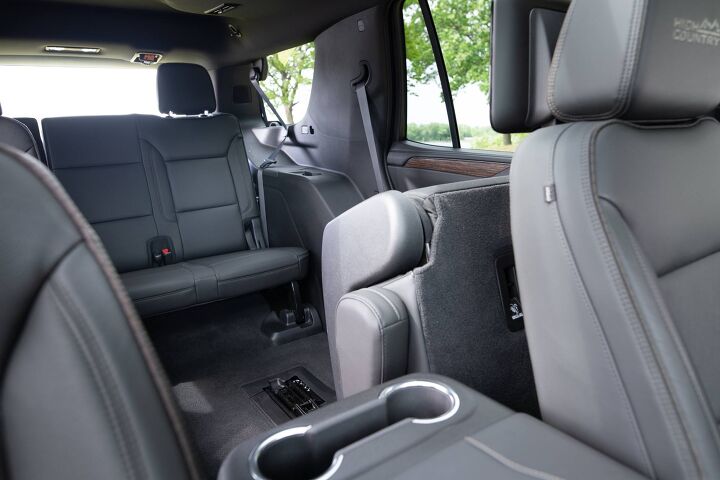








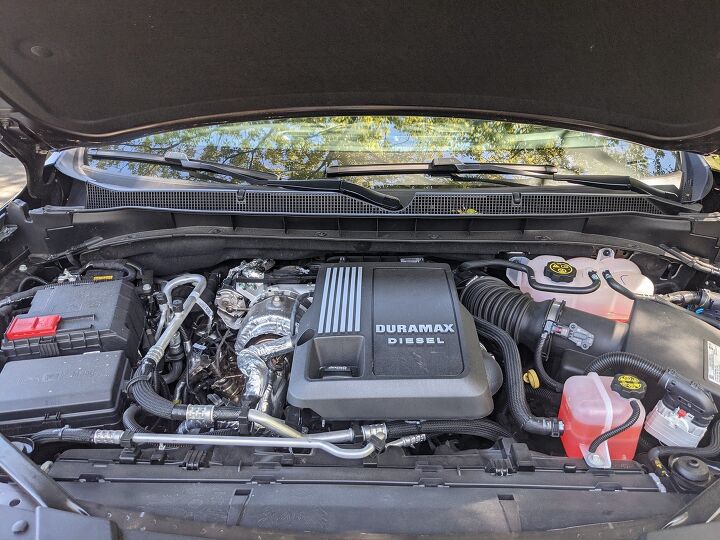





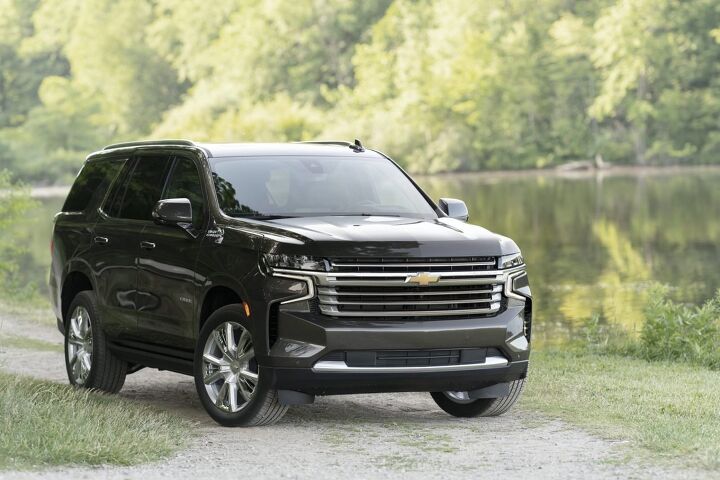














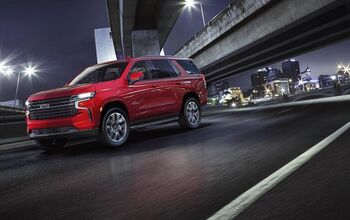



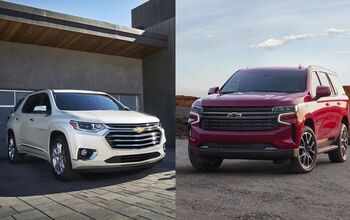
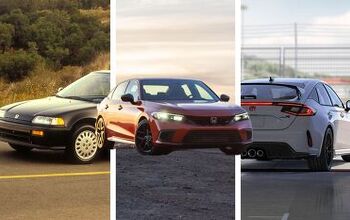



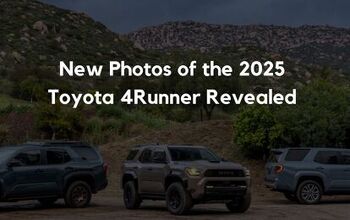




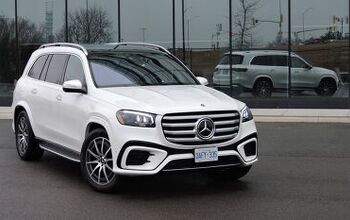
Comments
Join the conversation